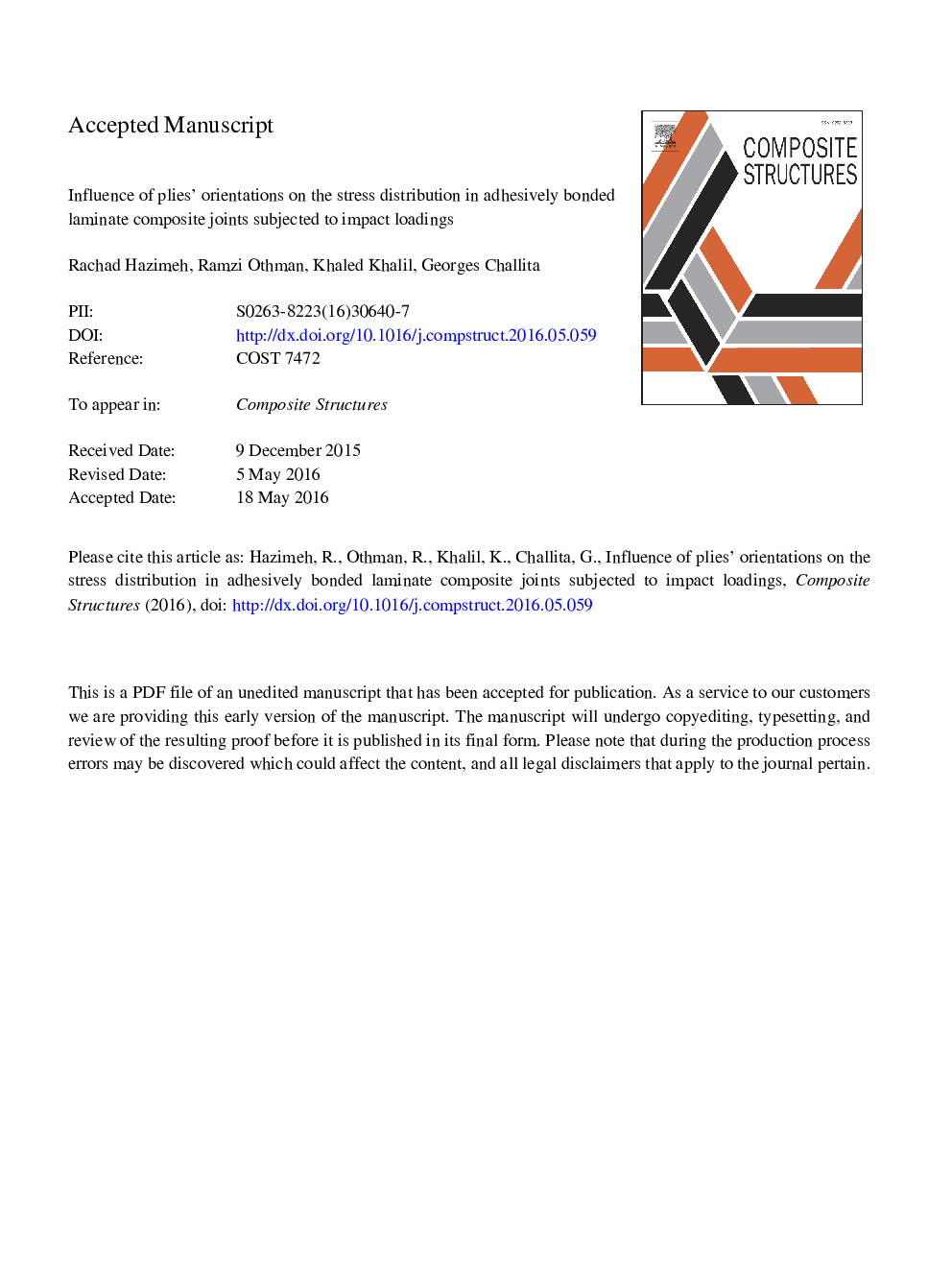| Article ID | Journal | Published Year | Pages | File Type |
|---|---|---|---|---|
| 6705415 | Composite Structures | 2016 | 34 Pages |
Abstract
Adhesive bonding of structural composite structures is increasingly used in several engineering applications. The mechanical behavior of adhesively-bonded composite joints is highly influenced by the reinforcements' orientations. In this work, the influence of composite laminates' orientation, on the peel and shear stresses in the adhesive layer of composite double lap joints subjected to in-plane impact loading, was investigated. To this end, three-dimensional finite elements analysis was undertaken. First, four laminate orientations/configurations were considered: 0°, ±45°, 90°, 0/90°. Second, configurations were chosen in a manner to explore the influence of plies' positions. Starting from the 0°, one or two ply(ies) are replaced by one or two ply(ies), respectively, which are oriented in 90° or ±45° directions. It was found that the profile of the substrates and adhesive stresses variation along the axial/longitudinal direction is not affected by the substrates orientations. However, the highest adhesive stresses are achieved when fibers are all or mostly oriented along the loading/axial direction [0°] and the lowest adhesive stresses are obtained when the fibers are oriented perpendicular to the applied load [90°]. It is then concluded that the adhesive stresses increase as the substrates longitudinal stiffness increases. It is also concluded that the stress in the adhesive layer is mostly influenced by the closest laminate plies and almost not affected by the far plies.
Related Topics
Physical Sciences and Engineering
Engineering
Civil and Structural Engineering
Authors
Rachad Hazimeh, Ramzi Othman, Khaled Khalil, Georges Challita,
